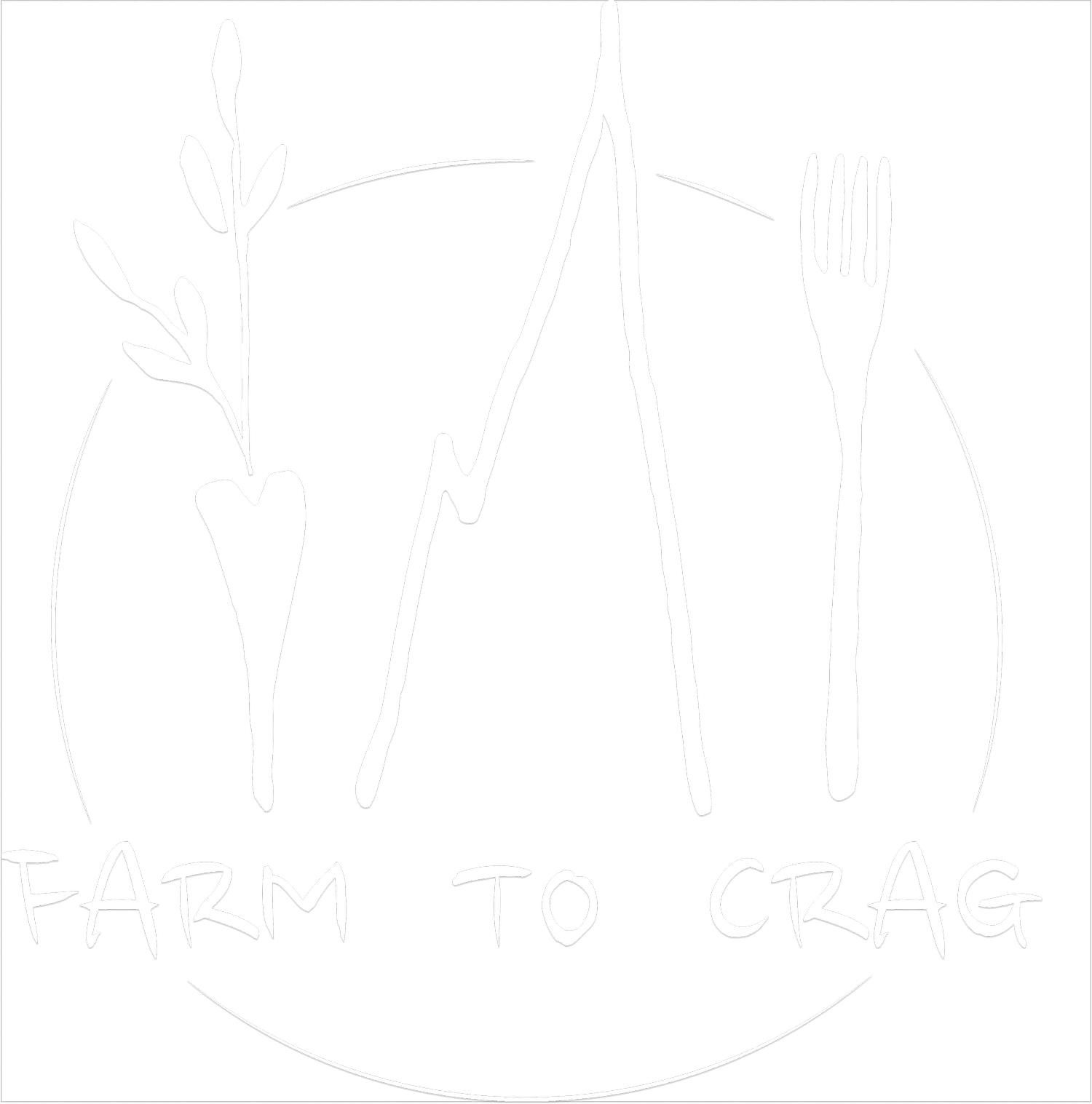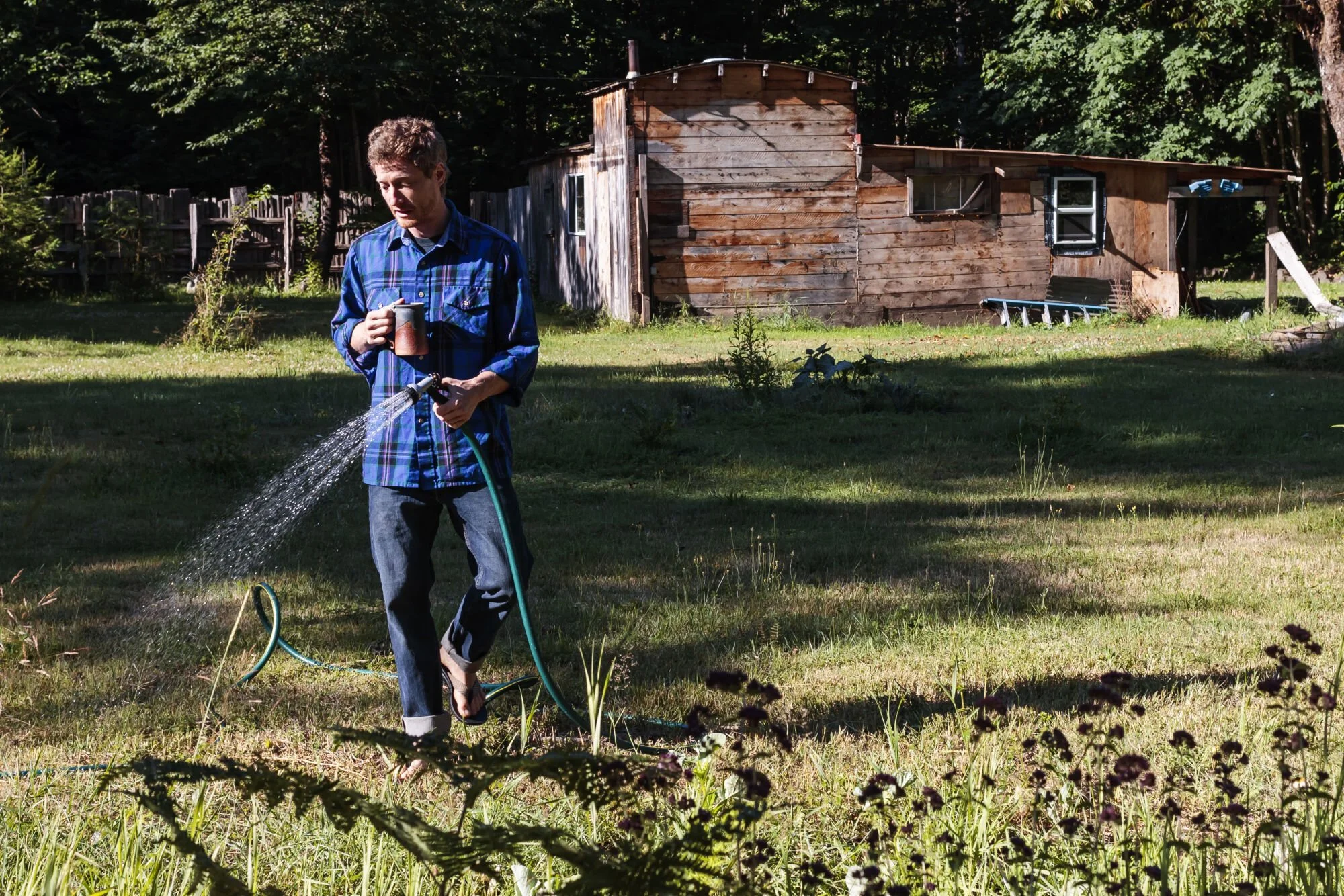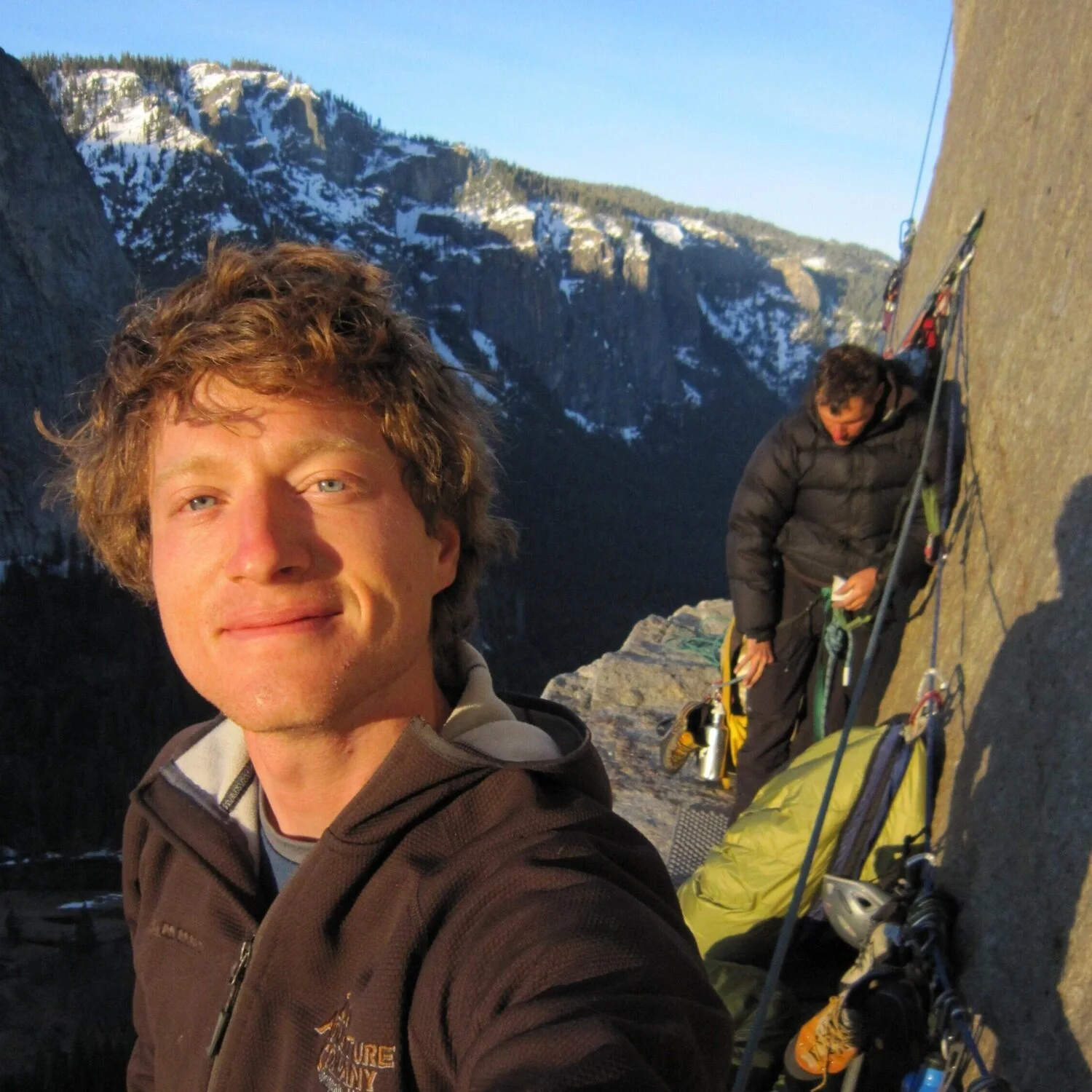The Kinship of Climbing and Farming
“I was glad to support a project that demonstrated how we can work in-step with the natural order and find compromise between humans and non-human beings that make their homes here”
Calvin Laatsch’s climber homestead — photo: Brandon Sawaya
I have been daydreaming about homesteading since I was a kid. Three years ago it happened; I was a couple years into my thirties, mid-career at the North Cascades Environmental Learning Center, and about to lose my apartment. I bought a 4-acre piece of land in Marblemount, Washington. On the property was one shoddy old cabin and a woodshed. Along the swift, green Skagit River, I put down roots for the first time in my adult life. Somewhere between hand-raising fluffy little chicks and battling a poultry lice infestation, I discovered that I can be as passionate about raising chickens as I am for climbing 5.12. And from the anemic looking apple trees, stuck hastily in the ground that first summer, I grew to appreciate how much care went into food by growing and harvesting it myself. Each bag of frozen berries or carton of eggs produced on the property was sustaining in an almost spiritual way.
When I moved in, the property was overgrown with weeds, blackberries, and scotch broom, and fenced off from the surrounding forest. I set to the daunting project of healing the property. There have been so many times I felt overwhelmed and defeated. Without the help of my friends, neighbors, and colleagues, I might not have made it through the first winter here. When the power failed, my old landlord rewired the whole place. I learned the basics of plumbing as I rebuilt the grey water system and replaced burst pipes to the outdoor shower.
"Shiny Yellow Crane" 5.12a at a small local crag called Diablo Wall where Calvin is developing climbs — photo: Brandon Sawaya
Removing the invasive plants, piles of tires, trash, and collapsed structures, I learned that the forest will heal through subtle human input, by making space. I watched animals take up residence on the land: a mountain beaver, deer, coyotes, owls, and all varieties of song birds. I keep a little garden journal to track what I’ve planted, the wildlife I encounter, and the timing of things like last frost and first blossoms.
Similar to how my understanding of food systems has evolved as I learn more about sustainable farming, my values as a climber have shifted as I’ve become more involved in addressing access issues here in the North Cascades. I was devastated when the superintendent of the National Park closed most of the rock climbing in the area to protect nesting peregrine falcons. Life is not easy in such a remote place living in a town of 250 people, but the recreation opportunities have always tipped the scales in favor of being ‘worth it’. Closures like this are not uncommon since the peregrine falcon population became endangered in the 1970s. Climbers have used their intimate knowledge of the cliffs and their rope skills to aid falcon research. Climbers and falcons share cliff faces throughout the country, and falcon populations have rebounded significantly. This closure was unique because so much of the climbing was off-limits and the duration. I came to learn that the park biologists simply didn’t have the time to monitor falcon nests closely.
Together with the Access Fund and Washington Climbers Coalition, I developed a volunteer falcon monitoring program. The scope of the climbing closure could be curtailed if we could help identify where nesting was taking place and track the growth and fledging of the young falcons. We volunteers spent the early hours of one morning each week peering through binoculars on a cold hillside across the river from the climbing area scanning the cliffs for falcon activity and nesting sites. Through our effort, we were able to provide information to the biologists that led to an early reopening of some crags and assure the health of the falcon population.
This experience has helped me see how important protected spaces are, and to better understand the complexities of recreation access in a National Park. By gaining a perspective outside the human point of view, I’ve learned that there is a nuanced balance in an ecosystem between all stakeholders, human and non-human. I was glad to support a project that demonstrated how we can work in-step with the natural order and find compromise between humans and non-human beings that make their homes here.
Calvin working to restore his land — photo: Brandon Sawaya
Learning about permaculture, I’ve seen the importance of understanding how humans fit within the natural systems rather than viewing us as separate. Human input on the environment like pruning fruit trees will yield more than those left untouched. We are part of nature, not separate, and we can choose to have a positive impact on the environment. This gives me assurance that humans are not inherently at odds with nature, and in the same way, a traveling climber does not need to be separate from or only taking from a place. My goal is to find harmonious ways to move through the climbing areas and local communities.
Climbers who have a “home crag” may relate to the ownership and care for a place that compels us to pick up a little extra trash, replace an old anchor, or stop at the local pizza joint even though it’s a bit more expensive. I see Farm to Crag as taking this one step further—asking climbers to embrace a cultural shift and demonstrate a high level of care toward the climbing areas and communities we travel to; after all, we’re visitors to these spaces, not entitled to them. The growing popularity of climbing and consequential access issues puts us at a crossroads where we have the opportunity to step up and take control of the influence we have on the natural and cultural environment.
People can tell when you care, and it often builds momentum. When I discovered Farm to Crag, I felt a kinship and an excitement about this collaboration with food producers. I hope others reading this post will look for ways they can support sustainable agriculture and find the satisfaction of connecting deeply with a place and being a respectful steward both home and away. Taking a small action like signing up for a farm-share CSA, or planting a garden can be immensely rewarding. As an added bonus, eating lots of fresh local produce, may even help you climb harder.
My Favorite Farmers in NW Washington
Skagit County
Long Hearing Farm https://www.longhearingfarm.org/
Blue Heron Farm https://www.whatcomfarmtoschool.org/posts/local-food-directory/skagit-county-farms/blue-heron-farm/
Rabbit Fields Farm https://www.rabbitfieldsfarm.com/
Viva Farms https://vivafarms.org/
Well Fed Farm https://wellfedskagit.wordpress.com/
Samish Bay Cheese https://samishbay.com/
Raven’s Roots Naturalist School http://ravensroots.org/
Snohomish County
Sno Valley Mushrooms https://www.snovalleymushrooms.com/
White Horse Meadows Farms http://whitehorsemeadowsfarm.com/
San Juan Islands
Lopez Island Creamery https://lopezislandcreamery.com/
Pelindaba Lavender Farm https://www.pelindabalavender.com/
Island Thyme https://www.islandthyme.com/
Bullock’s Permaculture Homestead https://www.permacultureportal.com/
Whatcom County/Bellingham
City Sprouts https://www.citysproutsfarm.com/
Bow Hill Blueberries https://www.bowhillblueberries.com/
Osprey Hill Farm https://www.ospreyhillfarm.com/
Cloud Mountain Farm Center https://www.cloudmountainfarmcenter.org/
Triple Wren Farms https://www.triplewrenfarms.com/
Local Farm Stays through AirBnB and Hipcamp:
Hall Homestead https://www.hipcamp.com/discover/washington/hall-homestead
Feral Farm Agroforestry http://www.feralfarmagroforestry.com/index.html
BelFish Farm https://www.hipcamp.com/washington/belfish-farm/belfish-farm
For Current Travel Info Visit:
Cascade Loop Scenic Highway https://www.cascadeloop.com/
Concrete Chamber of commerce https://concrete-wa.com/chamber/
North Cascades National Park https://www.nps.gov/noca/index.htm
Climber, homesteader and farmer Calvin Laatsch — photo: Nick Wilkes






